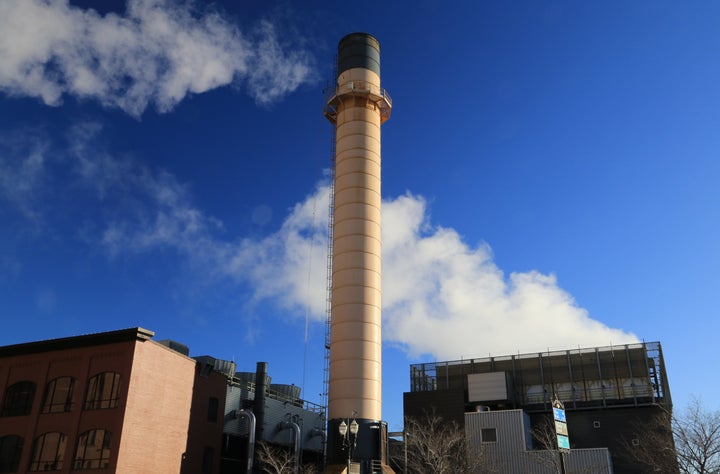Burning natural gas and wood instead of coal was supposed to be a bridge to a safer future, where heat and electricity came from sources that didn’t generate as much pollution.
But new research suggests alternative fuels are less of a bridge and more of a staircase.
A new Harvard University study found that, in at least 19 states plus Washington, D.C., burning gas now kills more people than coal because exposure to a deadly type of delicate particulate matter known as PM2.5 lingers in the air lodges in lung tissue.
The study, published Wednesday in the journal Environmental Research Letters, found 47,000 to 69,000 premature deaths each year that could be attributed to emissions from buildings, power generators, and industrial boilers. Gas, wood, and biomass fumes were responsible for between 29,000 and 46,000 deaths.
“If you swap out one combustion fuel for another, that’s not a pathway toward a healthy energy system,” said Harvard research scientist Jonathan Buonocore, the paper’s lead author. “This shows that even with the transition from coal to gas, there are remaining impacts.”
The findings do highlight the benefits of eliminating coal. In 2008, when coal produced nearly half the nation’s electricity, emissions from the power sector caused between 59,000 and 66,000 premature deaths. By 2017, that fell to 10,000 to 12,000 deaths.

Along with fewer deaths came drops in U.S. output of climate-changing carbon since gas produces roughly half the CO2 of coal. But other recent studies have cast doubt over those climate benefits.
U.S. carbon dioxide output, the primary gas causing climate change, fell 10% between 2000 to 2018 as the electricity sector’s emissions dropped 23%, primarily thanks to coal plants retiring. But suppose the new fleet of gas plants built over the past decade last as long and is fired up as often as the coal units they replaced. In that case, the projected emissions for the U.S. power sector over those generators’ lifespan will decrease climate-changing pollutants by just 12%, a study published last year in the journal AGU Advances found. Add to that the higher-end estimates of how much methane.
The study indicated that a potent heat-trapping gas and the main ingredient in natural gas leaks during production and burning, and even those reductions are effectively eliminated. In response to growing climate concerns and cheaper renewables, utilities are now publicly considering phasing out gas plants before expiration. The new Harvard research shows the extent of the health risks associated not just with replacing coal-fired power plants with gas units but continuing to use gas or other burning fuels for heating, cooking, and industrial purposes. Historically, we have focused on vast point sources [of pollution] like power plants and factories,” Buonocore said. “What this shows is that to continue improving air pollution, we should be shifting focus to buildings and smaller industries.
